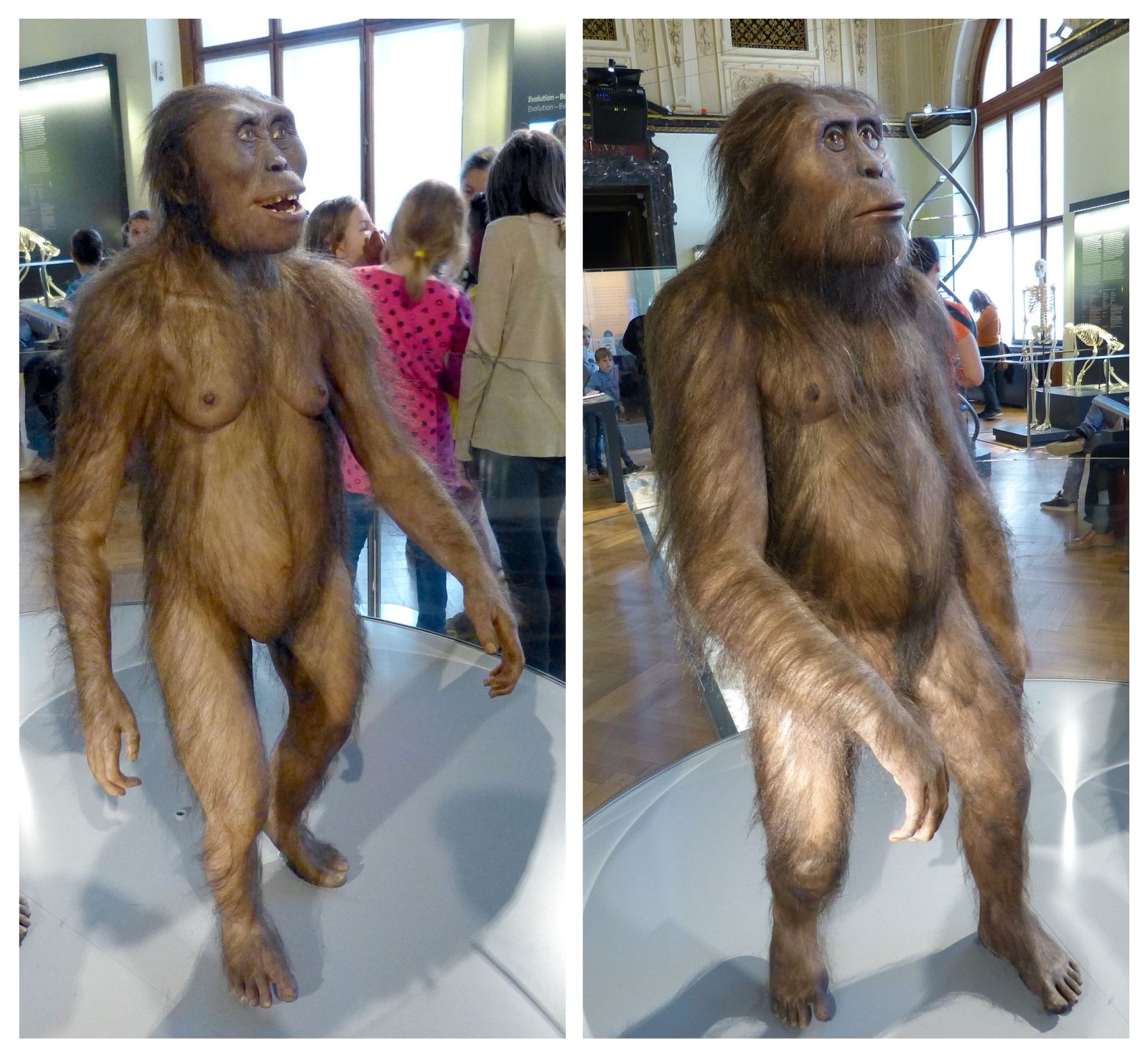📏 Human ancestors had much larger 'males' than 'females'
Published by Adrien,
Source: American Journal of Biological Anthropology
Other Languages: FR, DE, ES, PT
Source: American Journal of Biological Anthropology
Other Languages: FR, DE, ES, PT
Follow us on Google News (click on ☆)
Research led by Adam D. Gordon, an anthropologist at the University at Albany, reveals that male Australopithecus afarensis and A. africanus were significantly larger than females. This disparity suggests intense competition among males for access to mates, a trait observed in some modern primates.

Approximate reconstruction of a female (left) and male (right) Australopithecus afarensis at the Natural History Museum Vienna
The study, published in the American Journal of Biological Anthropology, uses an innovative method to overcome the limitations of incomplete fossils. It compares these ancient australopithecines to modern primates, revealing more pronounced sex-based size differences than in modern humans—or even gorillas.
The findings indicate these species likely lived in social systems where male competition was fierce. This dynamic could explain the imposing size of males, while smaller females may have been adapted to metabolic constraints related to reproduction.
This discovery challenges previous interpretations of sexual dimorphism in these species. It also opens new perspectives on the diversity of evolutionary pressures that shaped our ancestors long before the emergence of Homo sapiens.
What is sexual dimorphism?
Sexual dimorphism refers to physical differences between males and females of the same species, beyond reproductive organs. These variations can involve size, coloration, or the presence of specific structures like horns or feathers.
In primates, pronounced dimorphism is often linked to male competition for access to females. Larger or stronger males typically have an advantage in these confrontations, which can influence group social structure.
In the case of australopithecines, the significant size difference between sexes suggests a society where a few dominant males monopolized females. This scenario contrasts with modern humans, where size differences are less pronounced and social structures are more egalitarian.